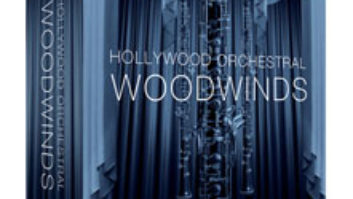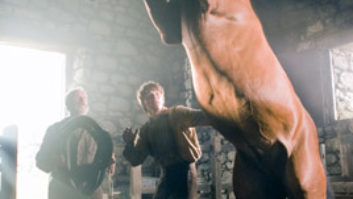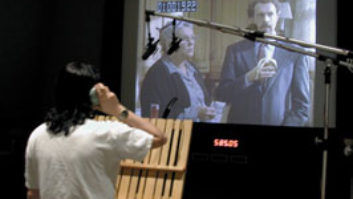After working on five Steven Spielberg films, three of which have garnered Academy Awards for sound effects editing, sound designer Gary Rydstrom and supervising sound editor Richard Hymns may have discovered a little secret about success. “Gary and I have worked on so many films with Steven now that we’ve gained his trust,” says Hymns. “Instead of having him approve every detail along the way, Gary sends him guide tracks of the essential elements, and then we show him the reels as we final-mix them.”
With Minority Report, Spielberg’s futuristic action-thriller starring Tom Cruise, the director offered them further latitude to create the sounds for a huge number of devices that do not yet exist. From the magnetically charged cars of a vast commuter grid to the mechanical spiders used by the police as detection devices, Rydstrom and Hymns had numerous opportunities to show their virtuosity.
It was in the more familiar that Rydstrom once again found his forte, using one of the everyday tools of a re-recording mixer to express an idea that says past, future and present at the same time.
The story revolves around the idea of police who are able to capture criminals before they commit their crimes. “They have this technology that’s able to plug into the brains of these genetic mutants that can see the future and put on a screen the images and sounds that they see,” says Rydstrom. “Tom Cruise’s character, who works for the government, is trying to find clues to a murder. Spielberg is clever enough to put a horse or a sprinkler in the scene so that it can show up as they scroll through these visions. It’s real montage-like. But it’s also playing with time, going backward, playing in different perspectives.”
Rydstrom’s response was like the age-old advice to writers, Start with what you know. “We were down in L.A.,” he recounts, in reference to an earlier project, “and they were recording all the digital sound sources onto Tascam MMR drives, but we were mixing to film. The sound that the digital audio would make as it tried to catch up to the film system, grinding to a halt or starting up, was pretty cool. So, I set up the same thing here [at Skywalker]. Then I put all these various sounds onto a drive, jogged through it, and made all these weird, sweeping sounds.”
A bit like a rap artist, scratching records, only digital. “One of my favorites is when the images freeze, as if the sound is caught in this loop and pulsing. I would jog to a crawl and the jog system would have this speed-up slow-down, speed-up slow-down, speed-up slow-down pattern to it. You get these eerie little sounds that you can place on these images.
“It wouldn’t have sounded cool enough if we were just using tape,” continues Rydstrom. “Digital has a stuttering quality as you speed up or jog through that’s very interesting.”
The sound works well as a representation of the future. Yet it shows a technology with which we are currently surrounded, and therefore points to an essential truth about all science fiction: Our conception of the future is necessarily pieced together from images past and present. “The whole idea of these visions,” says Rydstrom, “are projected in a way that looks very unique to me, although there are times when the images remind me of old silent movies.”
As the film reaches it climax, “You see a vision of a future murder, and you start hearing and seeing those things that led up to it in real life,” he says. The images are past, in that we’ve heard them before, and future, in that they have not yet happened. Spielberg’s intervention as a director and Rydstrom’s, in the way he manipulates sound, reminds us that they are also present.
“Spielberg’s using very distinct visual moments to key these visions. So we’re trying to do the same thing with sound cues. There’s a merry-go-round that you see outside one of these murders. You scrub it and do things to it, and when you slow down enough, you start getting digital artifacts. We didn’t want it to sound like bad digital, but it creates a lot of interesting sounds.”
In the end, Spielberg presents us with a harrowing projection of what we live with today. “It’s a darker thriller than he’s done before,” concludes Hymns, “and it’s got a huge variety of material.” This meant that Hymns and Rydstrom had their work cut out to get it ready for the final. The final, of course, being the place where the success of that work is finally determined. But with three Academy Award successes already in the databanks, it seems almost possible for Rydstrom and Hymns to predict the future.





